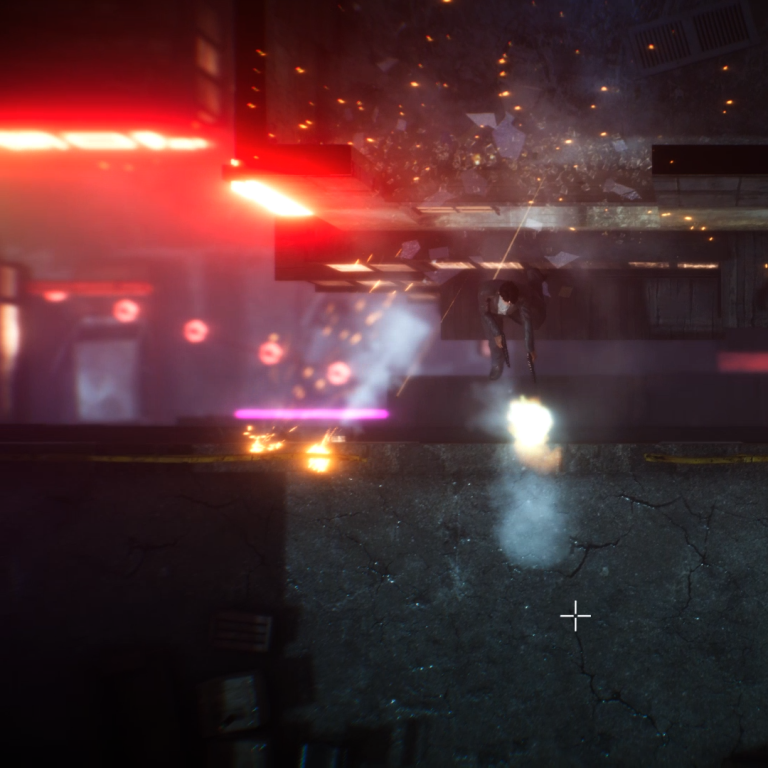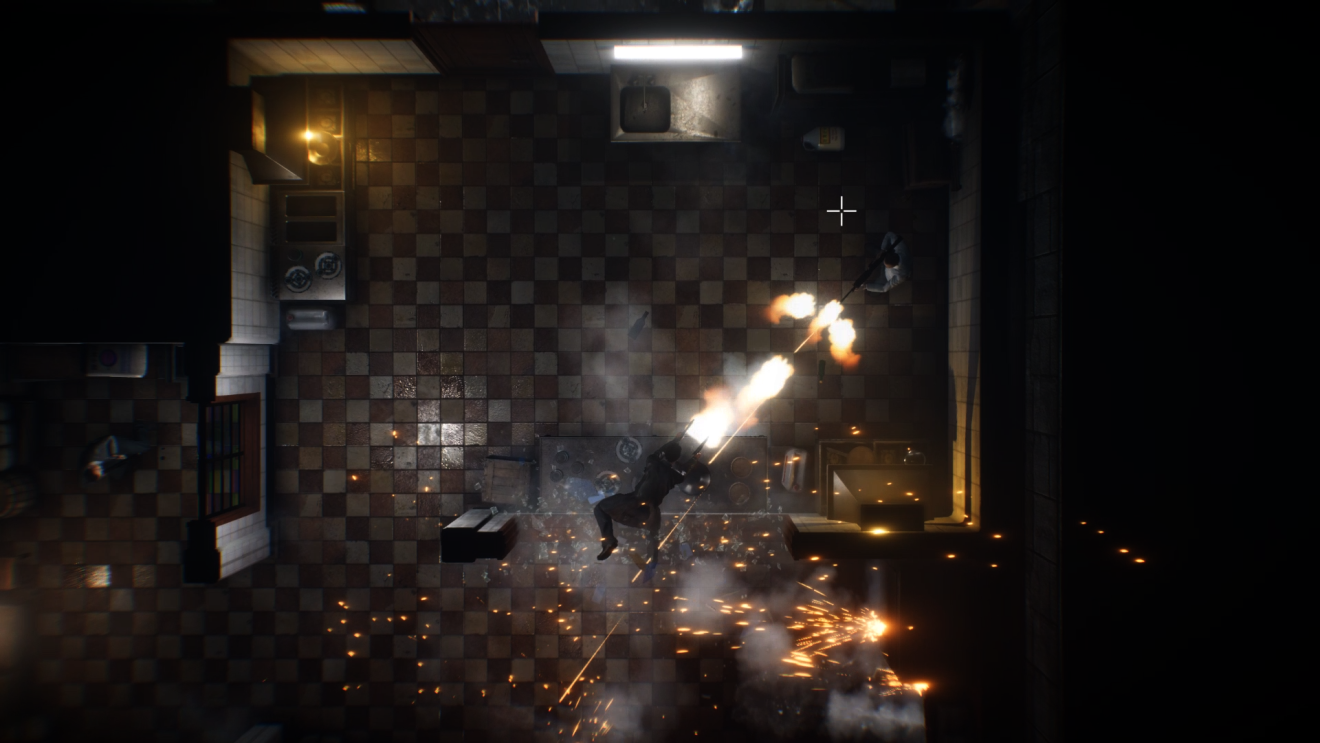
Review: The Hong Kong Massacre is a bloody good time
Take Hotline Miami, add some John Woo, and you get this stylish action game
It’s the video game version of a John Woo film, taking all the slow motion dual-pistol acrobatics of Hard Boiled, and combining it with the indie gaming classic Hotline Miami. It’s a great combination, adding a heavy dose of cinematic style to Hotline Miami’s fast-paced ultraviolence.
To be honest, it’s hard not to continually compare the two games, because they share so much in common. The objective is simply to eliminate every enemy in a level. Every shot is deadly in both games, with a single hit enough to kill virtually any enemy. Crucially, the player shares the same weakness, making every single enemy encounter dangerous.

But here’s where the games dramatically differ. In Hotline Miami, the risk of death turns the game into a sort of puzzle. Winging it is almost impossible, so you need a plan, an order of battle to eliminate enemies.
The Hong Kong Massacre quite literally dodges this. One button activates slow-mo, allowing you to side-step bullets. Another activates a dodge move, where your character is invulnerable while performing an acrobatic move -- sometimes it’s a roll, sometimes it’s a flip, and sometimes you go flying through a window.
It gives the game a great rhythm, and means despite the repetitive and simple nature, it doesn’t feel stale. It turns every enemy encounter from a risk to an opportunity: How will I take this group of enemies out? Jump through the window and shoot the guy on the right first? Or blow open the door and start from the left?

There’s a reason I’ve mentioned jumping through windows twice now: The Hong Kong Massacre is gorgeous. Shattering a window sends shards of glass everywhere, doors splinter when shot, and every bullet spatters an almost disturbing amount of blood on every surface. And it looks even better when you’re in slow-mo, seeing debris flying as bullets whizz through the air.
There’s also a reason I haven’t mentioned the story yet, because it’s utterly forgettable; a standard tale of revenge told through short interludes between levels. There’s a neat framing for the game, with your character recounting the events of the game to the police. But there’s little context inside the levels, and the story doesn’t intrude on the game beyond those cutscenes.
To be clear, the levels are gorgeous; sharp and detailed, beautifully lit by the neon signs so common in Hong Kong. As someone born and raised in this city, I was pleasantly surprised by the game’s look. The levels are littered with elements of the city’s cinematic history -- whether it’s a shootout in a taxi garage, filled with the red cars all too familiar to me, or a stage set in a teahouse, or even jumping from rooftop to rooftop, in a place where tall buildings clustered so close together are normal.

While the looks of the levels are memorable, precious else about them is. Only a few stand out in my head for offering anything interesting; most of the others seem to blend together. There’s little feel of progression through them -- barring a couple of exceptions, they don’t offer any new ideas, teach you any tricks, or introduce new strategies.
It doesn’t help that the game can be quite easy -- I passed more than a few on my first go, and I wouldn’t rate myself as a terribly good gamer. Given how quickly many of them go, given the lack of any interesting tricks, and without any good story to frame them, it feels like a misstep to have so many levels. I feel like I’d have preferred fewer stages if they more carefully crafted.
On the bright side, there is plenty of extra challenge on offer. You earn bonuses for beating a level under a certain time, for being accurate with every single shot, or for not using your slow motion power at all. Where the basic levels can be a simple walkthrough, these are genuinely challenging.
I can’t even imagine how I’d finish some of the harder levels while nailing every single shot. But I can see myself attempting it, because this game hooks you thanks to the core gameplay loop: Slow down time, dodge, open fire.
Where the threat of instant death brings more caution to Hotline Miami, here the slow-mo and dodge combination allows you to be aggressive. When you get the hang of it, no room full of enemies feels like an obstacle, but an opportunity; you slip into a groove where everything makes sense, everything feels right, and no room full of enemies is an obstacle.
When a game nails the core loop, when it just feels so good to play, it’s easy to forgive the things that don’t quite work. The Hong Kong Massacre is one of those games. Yeah, the story doesn’t do it for me -- but who cares when it’s this much fun?
For more insights into China tech, sign up for our tech newsletters, subscribe to our Inside China Tech podcast, and download the comprehensive 2019 China Internet Report. Also roam China Tech City, an award-winning interactive digital map at our sister site Abacus.

